In the northwest English city of Liverpool, a musical heritage serenades visitors quite unlike any other in Europe.
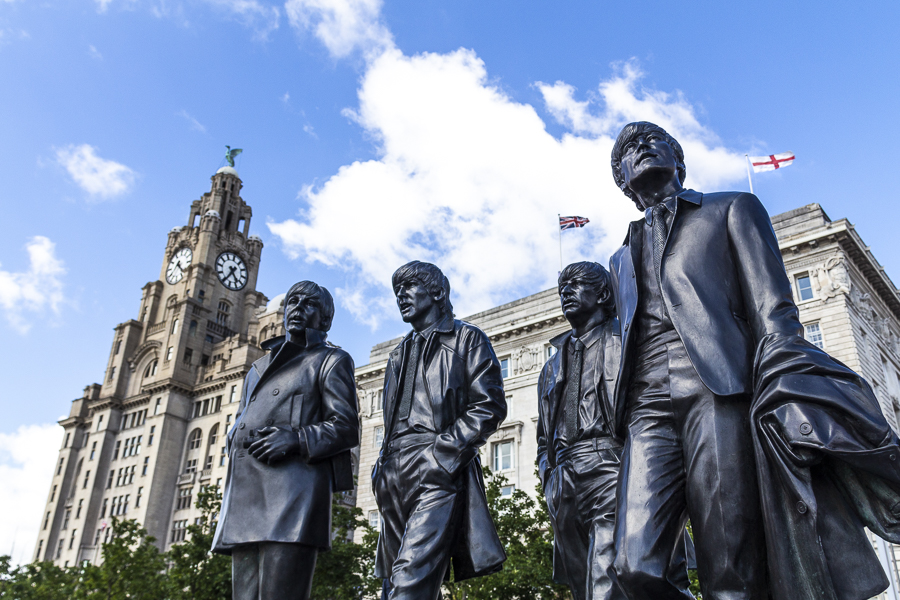
Liver Building and the famous statue (Photo: Paul Stafford for Travelmag.com)
On a drizzle-kissed waterfront promenade, a steady stream of visitors files past bronze statues of four men with mop-top haircuts. Despite the downcast weather, the mood is upbeat as the queue politely inches forwards and each person has their photo taken with the statues.
Sun pokes through the cloud, gleaming off the copper Liver Birds atop the Royal Liver Building. Somebody breaks into a rendition of Here Comes the Sun. And if it’s the first time you hear a Beatles song in Liverpool, you can guarantee it won’t be the last.
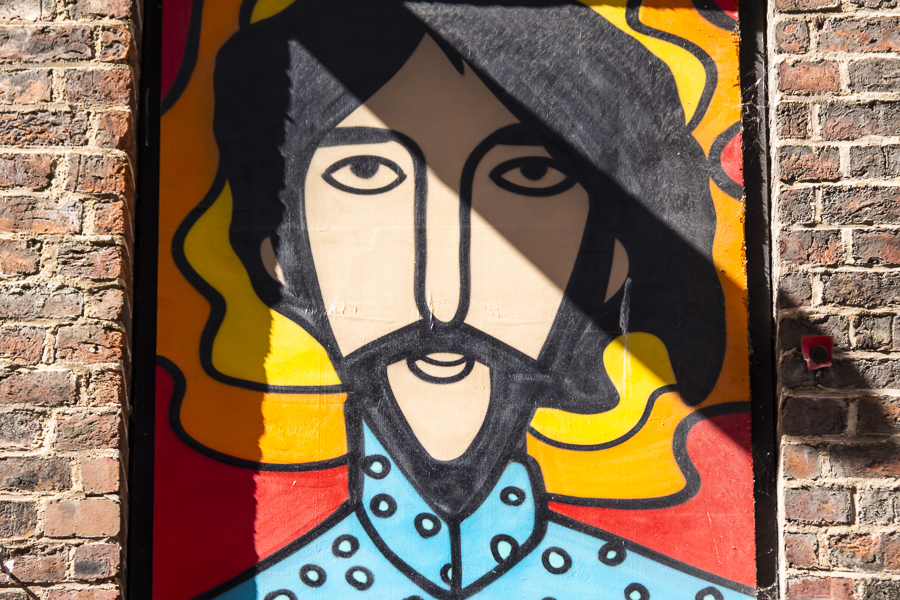
Odes to The Beatles are all around Liverpool (Photo: Paul Stafford for Travelmag.com)
As with the waterfront statues of Paul, George, Ringo and John, The Beatles shoehorn their way into practically every aspect of life in Liverpool. In fact, you would be forgiven for thinking that they are the city’s only musical legacy.
But those Liver Birds tell a different story. As an official symbol of Liverpool since the early 13th century, they represent the city’s individualism, the kind of mindset that gave rise to many revered musicians and bands through the years, such as Echo & the Bunnymen, Frankie Goes to Hollywood, The Lightning Seeds, Gerry & the Pacemakers, Atomic Kitten and The La’s.
Museums on the waterfront

Museum of Liverpool with its unmistakable frontage (Photo: Paul Stafford for Travelmag.com)
A great way to begin any musical pilgrimage to Liverpool is by visiting the waterfront along the River Mersey, where you’ll find many museums (which double as a convenient escape from any inclement weather). There’s a handful of options boasting Beatles exhibitions:
Behind The Beatles Statue is the Cunard Building, former headquarters of the vast shipping and cruise line company. This piece of Liverpudlian heritage now houses the British Music Experience (open daily), a museum charting the history of music in the country through the decades. There’s also a small Beatles exhibit at the nearby Museum of Liverpool (open Tue-Sun), an unmissable modern building. You’ll also find displays charting the city’s social history and heritage.
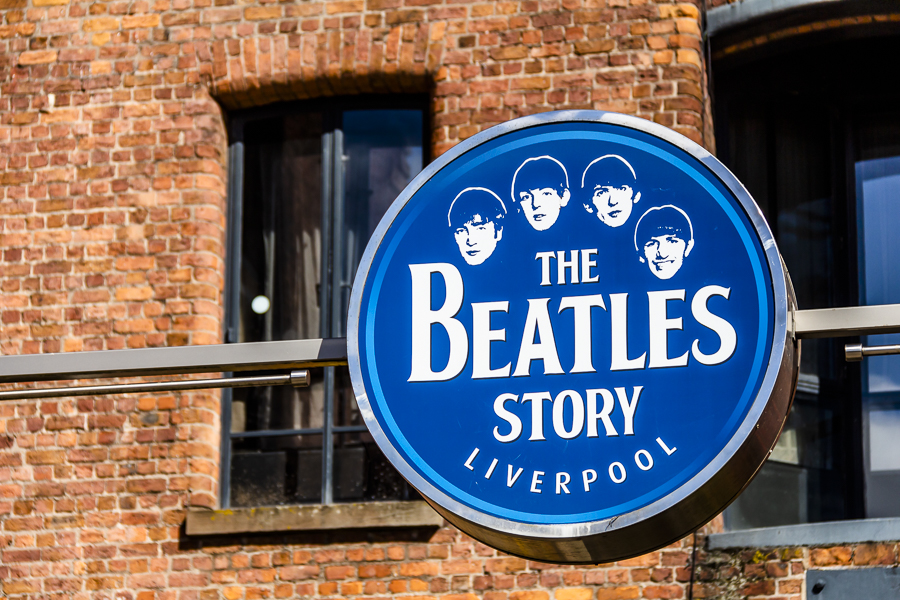
The Beatles Story at Albert Dock (Photo: Paul Stafford for Travelmag.com)
If that doesn’t sate your Fab Four appetite, two separate museums are dedicated entirely to the band. The Beatles Story (open daily) is located at the stunning Royal Albert Dock. This interactive experience recreates many of the 60s-era places that had a key formative impact on the band and includes a walk-through yellow submarine.
The world’s most musical street?
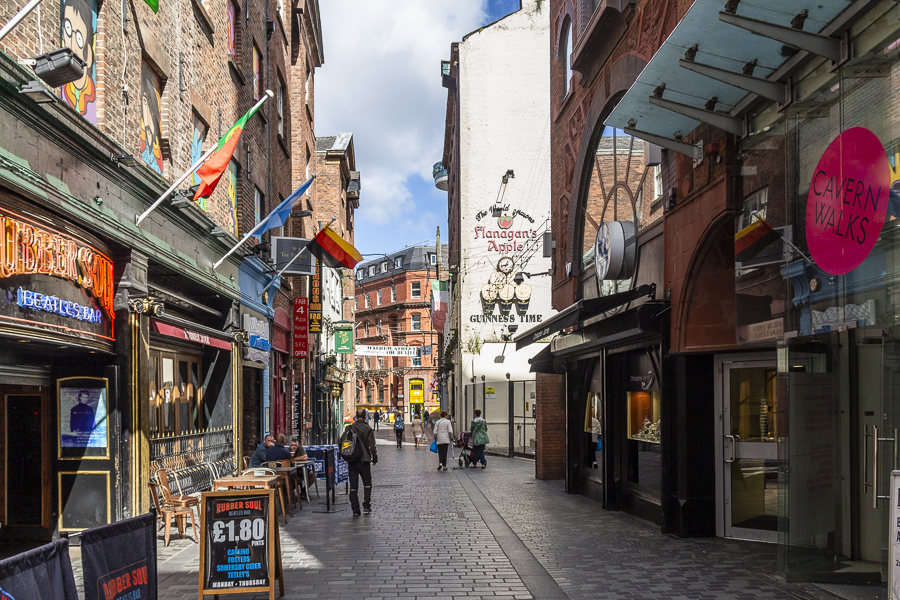
Mathew St before the live music kicks in (Photo: Paul Stafford for Travelmag.com)
Mathew Street is a ten-minute walk away in Liverpool city centre. The opportunities to see live music here, from buskers and bands alike, seem endless throughout the day. Liverpool Beatles Museum (open daily) offers a fourth archive of the seemingly inexhaustible supply of Fab Four memorabilia. Highlights include original instruments and costumes from the Sgt Pepper’s Lonely Hearts Club Band era.
It’s not just the people who are celebrated on Mathew Street either. Overshadowing every venue in Liverpool is Cavern Club (open daily), the legendary subterranean palace of popular music, where The Beatles cut their teeth. These days its alcoves and walls contain exhibitions of music memorabilia, yet it also remains a venue for live music, giving the future stars of the city’s music scene a chance to rack up stage experience, as long as they’ve got a couple of good Beatles covers on their set lists.

Posters in Cavern Club (Photo: Paul Stafford for Travelmag.com)
The venue opens at 11am and closes late, attracting people from all over the world. One regular performer is Jon Keats, the current director of the Cavern empire, who runs the venues along with International Beatle Week each August. When Jon, capable of playing any song from The Beatles’ oeuvre on request, takes to the stage for his daily set, it is only mid-afternoon. Just two songs in, visitors from New Zealand, USA, Argentina, France and South Korea are all dancing to Eight Days a Week.
Surprisingly, although The Beatles could live off the royalties earned from spins of their music in Liverpool alone these days, they were not always loved here. Despite playing 292 gigs at Cavern Club, they were considered traitors for moving to London in 1963. There was even a popular saying “what did The Beatles ever do for Liverpool?”
“People disliked The Beatles because they left,” says Jon “but Lennon’s assassination in 1980 made people re-evaluate.” No doubt the money pouring in from visitors occasioned a change of heart, too.
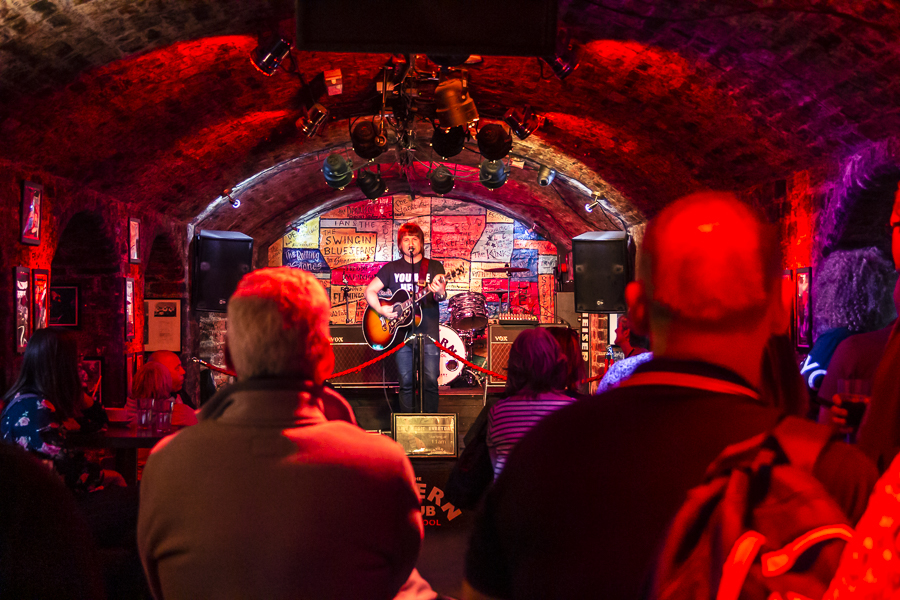
Decades on, Beatles songs ring around Cavern Club (Photo: Paul Stafford for Travelmag.com)
Back outside, it’s 3pm and the first band of the day takes to the stage at Eric’s Liverpool (open daily). It’s one of over a dozen other live music pubs and clubs on this tiny pedestrianised street, besides Cavern Club. Eric’s was a crucial epicentre of Liverpool’s musical revival in the late 1970s. Struggling to find new directions in the wake of The Beatles’ split, The Teardrop Explodes and Big in Japan began shaping the sound of the 80s here. Liverpool’s music has come a long way from the Merseybeat.
Opposite Eric’s stands a statue of Cilla Black, beloved singer-turned-television presenter. The message to the musicians young and old here is that if you make it to the big time, the city will laud you forever.
Landmarks beyond the city centre
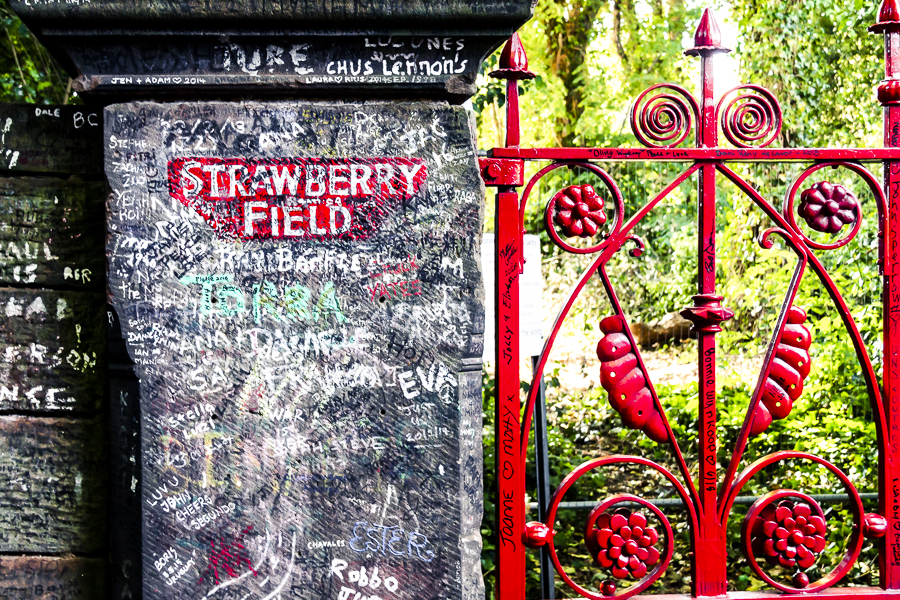
Strawberry Field forever (Photo: Paul Stafford for Travelmag.com)
Many other famous Beatles landmarks are dotted around the city. These include houses where the members spent their childhoods, such as Mendips – the home of John Lennon’s Aunt Mimi – or 20 Forthlin Road, whose bathroom has a mythical quality; Paul McCartney wrote many of the early Beatles songs there because it had the best acoustics in the house. You can see both from the outside on guided tours (see below). Alternatively, because the houses are National Trust properties, it’s also possible to tour the interiors (Wed-Sun or daily in summer).
Then there are the parts of Liverpool immortalised on vinyl. Penny Lane, Strawberry Field, and even the grave of one Eleanor Rigby, who may or may not be the subject of the eponymous song (according to McCartney it’s mere coincidence), all list high on a Beatles fan’s wish list.
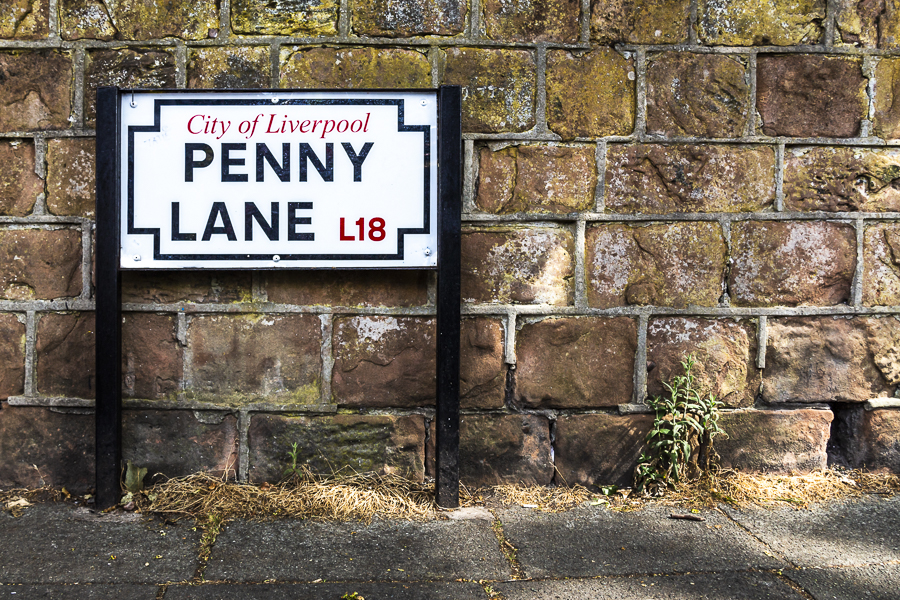
Penny Lane in your eyes (Photo: Paul Stafford for Travelmag.com)
The homes and song locales are dotted across the southern part of Liverpool, slightly too strung out to walk between. As a result, guided tours offer a great way to get around, with spirited tour guides and a Beatles-heavy soundtrack played in the coach between stops. Popular, long-running examples are the Magical Mystery Tour (multiple daily, £20 per person), which is a group excursion by bus, or a private, three-hour taxi tour (multiple daily, £190 for groups of up to five), if you’d prefer a more personalised itinerary.
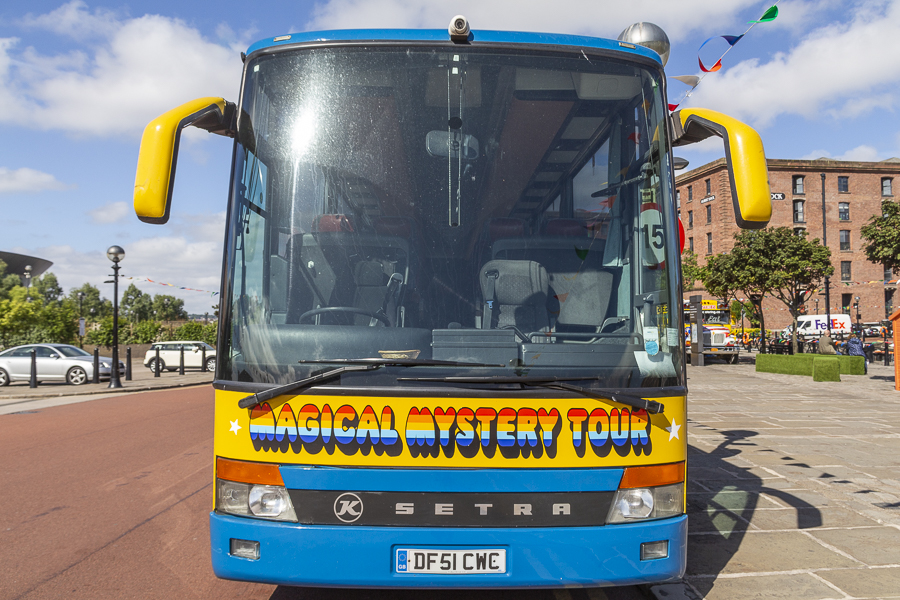
The Magical Mystery Tour bus (Photo: Paul Stafford for Travelmag.com)
Modern muso hangouts
Neatly spanning a decade from 1960-70, The Beatles crafted an international stardom that seems unrivalled. In the process, the four lads from Liverpool put their home city on the map for devotees of their work. But the modern scene, while drawing inspiration from The Beatles, is making its own Mersey waves.
Lately, The Mysterines, Circa Waves and Clean Cut Kid are making the transition to international recognition. But it’s all just part of an established pattern in Liverpool. While Cavern Club will always be a legendary club to play for any band, if you’re looking to tune into the best new Liverpudlian music, there are some other great venues to check out.
The Jacaranda (open daily), in the Ropewalks district, is one of the most exciting venues for up-and-coming music. Naturally, it has pedigree, having hosted The Beatles in its storied history that begins in 1958.

Lennon takes a break on Mathew St (Photo: Paul Stafford for Travelmag.com)
Genre-wise, Liverpool’s offerings ae surprisingly broad, from the legendary house music at nightclubs across the city (although Cream is still waiting to be resurrected) to the Royal Liverpool Philharmonic (Hope St), which hosts the city’s internationally acclaimed orchestra and touring artists. EBGBS (82 Seel St, daily) and Jimmy’s Liverpool (130 Bold St, Tue-Sun) are among the other top live music venues worth checking out.
Eurovision 2023
In 2021, the Maritime Mercantile City, as the old dockland region of the Liverpool Waterfront is known, was delisted from the UNESCO World Heritage. Some of the newer developments had reportedly caused “irreversible loss of attributes conveying the outstanding universal value of the property.” Despite this adjudged mismanagement, the area’s former degradation seems to be long past. One of the area’s newer venues is the M&S Bank Arena (aka Liverpool Arena), opened in 2008, which will host the 2023 Eurovision Song Contest on behalf of 2022’s winners Ukraine.
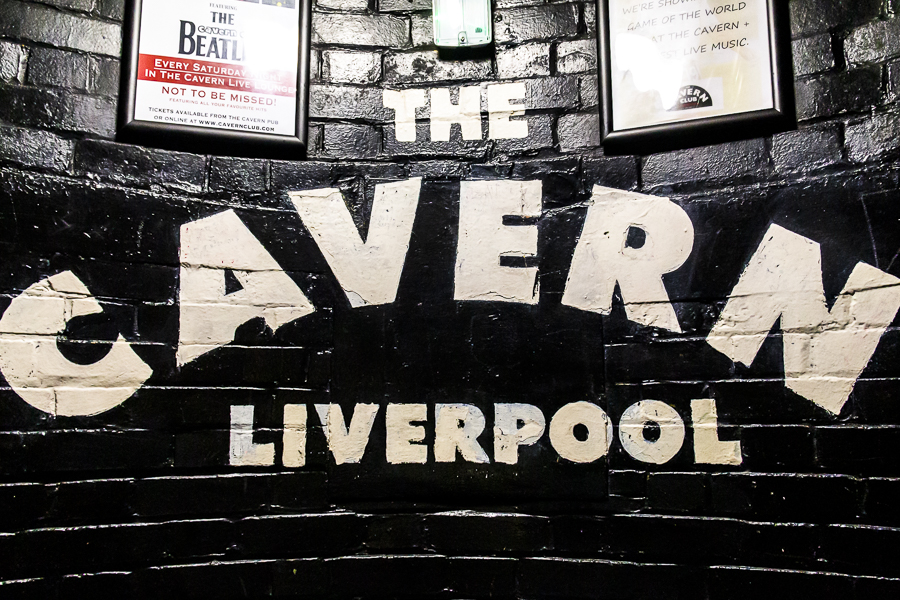
Entrance to Cavern Club (Photo: Paul Stafford for Travelmag.com)
The Eurovision Song Contest takes place from May 9th-13th 2023. All tours, venues and museums mentioned in this piece are open throughout the year. The Magical Mystery Tour runs hourly during the summer months.